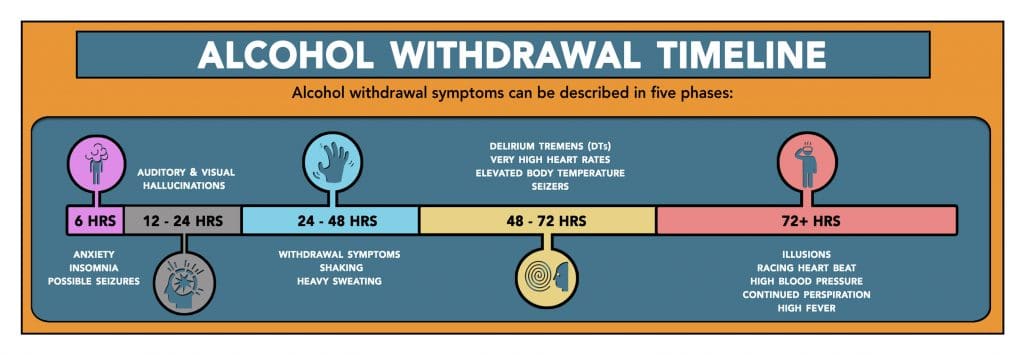

Because the toxins your body is reacting to are already in your bloodstream. It’ll take time for those to get metabolized by your liver, and how much or little you vomit won’t change how much work your liver has to do.


Because the toxins your body is reacting to are already in your bloodstream. It’ll take time for those to get metabolized by your liver, and how much or little you vomit won’t change how much work your liver has to do.


I’d definitely agree that it’s a Pit Bull cross with a shepherd of some kind. The shape of the face definitely suggests Pit Bull to me, but I get more of a Belgian Malinois vibe from those ears:

Could explain why two hours at a dog park didn’t crush his energy levels, Malinois are renowned and/or notorious for their exercise needs.


I haven’t actually tried the new ones, I probably should do that before I slander them. The Harvest Cheddar ones were so good though. I haven’t seen them in at least a few years, unfortunately.


I noticed that Miss Vickie’s has a new sour cream something or other flavour in a bag that’s the same colour, or nearly so. Every time I go through the chip aisle I get very excited for a second, then I realize it’s not actually the Harvest Cheddar and my hopes are dashed. I’m developing an irrational hatred of those impostor chips.


The plow. It allowed early river valley peoples to generate semi-reliable food surpluses, and those food surpluses triggered everything that came after. I can’t take credit for this argument, I first encountered it in this episode from the first season of Connections.


There is a Unicode Technical Standard for this, called the Unicode Collation Algorithm. Whether everyone uses it, I can’t say. As it says on the linked page:
Conformance to the Unicode Standard does not imply conformance to any UTS.
So in other words it’s possible to conform to the Unicode Standard without adhering to the Unicode Collation Algorithm.
whatever this is: ¦
That is the pipe symbol, or vertical bar. When it has a gap in the middle it may be known as the broken pipe symbol or broken bar. It’s considered the same symbol with or without the gap. Early terminals displayed it with a gap to make it distinguishable from lower-case L characters.


Guy Gavriel Kay. First book published in 1984, part of a trilogy that was Tolkien-esque, quite decent, but not exactly ground-breaking. He’s since gone on to something a little more unique, which he describes as “historical fiction with a quarter-turn to the fantastic.” Impeccably researched but set an alternate world that’s a close but not exact mirror of our own. This allows him to take a few small liberties with historical accuracy in service of telling a better story. Personally I think he really hit his stride in 1995 with The Lions of Al-Rassan, and almost everything he’s written since then has been exceptional.


Summing a balance column is never correct. Take any example that doesn’t end in a zero balance and it’s easy to see that the balance column’s sum is meaningless:



Depends on the color of the wall, but likely no. A matte black wall would absorb a lot of light, a matte white wall would reflect most of the light. Other colours would fall somewhere in the middle, reflecting some wavelengths and absorbing others. The only difference with a mirror is that it reflects light in a uniform fashion, whereas a painted wall will generally scatter reflected light. But scattered light still contributes to total light output! The only scenario where a mirror behind a lamp would come close to doubling light output would be if the wall we’re comparing against is painted with Vantablack or some other ultrablack paint that absorbs 99%+ of the light from the lamp.


There are some viruses that have targeted Linux, but they’re rare compared to other platforms and their ability to spread is relatively low. One of the main reasons is just down to how software tends to be installed on each platform. Viruses have an easier time spreading on Windows or OSX where users are more accustomed to downloading an executable and running it. Once there’s a malicious running process, it has a comparatively high chance to spread because it can attempt to escalate its privileges either by exploiting a bug or socially engineering the user to click through a privilege escalation prompt. That entire workflow is practically nonexistent on Linux, users just don’t tend to download and execute random binaries. Instead most Linux software gets delivered in one of these ways, each of which has impediments that reduce the chance a virus could spread:
There are some exceptions, for example some companies like Hashicorp will distribute their stuff as precompiled binaries. Even in that case you’re probably fine as long as you don’t run the downloaded binary as root. Users in the habit of downloading strange binaries from sketchy places and running them as root just aren’t very common among the Linux userbase. I’m sure there are some (and they should really stop doing that), but there aren’t enough of them to allow a virus to spread unchecked.


I don’t think dedicated antivirus software is really required anymore. I haven’t run third-party AV software on any of my systems in the last decade.
On Windows, the built-in Windows Defender is good enough for most use cases. When it first launched Defender had a pretty bad track record at stopping viruses, but now it routinely ranks at the top.
On Linux, antivirus software has never really been required. One major exception I can think of would be if you’re running a file server or mail server that talks to OSX or Windows systems. Even then the AV software isn’t really there to protect the server, it’s there to make sure you don’t pass malware or viruses to those non-Linux clients.


I didn’t say I’d downvote in those situations. I would guess that Rule 5 needs to exist for a reason. Without it the community could get overrun with ragebait posts. Personally I wouldn’t consider any of your examples questions to be ones that violate Rule 5, but I’m not a mod and I don’t make or enforce the rules. I also wouldn’t downvote such a question myself, but I would consider reporting it if it seemed like the OP was consistently trying to pull the conversation into fractious territory. Anyway, if we want to to discuss the rules and downvoting vs. reporting, that should probably go in a meta post.


I know, I couldn’t resist the urge to make a Lionel Hutz reference.


Serious answer, the question might be one that broke one of the community rules like Rule 5 (“No baiting or sealioning or promoting an agenda”) or Rule 6 (No meme or troll questions, except on Fridays) and voters are expressing their displeasure.
Silly answer, the question wasn’t stupid. The name of the community is actually “No, Stupid Questions.” The missing comma is a typo.


People here seem partial to Jellyfin
I recently switched to Jellyfin and I’ve been pretty impressed with it. Previously I was using some DLNA server software (not Plex) with my TV’s built-in DLNA client. That worked well for several years but I started having problems with new media items not appearing on the TV, so I decided to try some alternatives. Jellyfin was the first one I tried, and it’s working so well that I haven’t felt compelled to search any further.
the internet seems to feel it doesn’t work smoothly with xbox (buggy app/integration).
Why not try it and see how it works for you? Jellyfin is free and open source, so all it would cost you is a little time.
I have a TCL tv with (with google smart TV software)
Can you install apps from Google Play on this TV? If so, there’s a Jellyfin app for Google TVs. I can’t say how well the Google TV Jellyfin app works as I have an LG TV myself, so currently I’m using the Jellyfin LG TV app.
If you can’t install apps on that TV, does it have a DLNA client built in? Many TVs do, and that’s how I streamed media to my TV for years. On my LG TV the DLNA server shows up as another source when I press the button to bring up the list of inputs. The custom app is definitely a lot more feature-rich, but a DLNA client can be quite functional and Jellyfin can be configured to work as a DLNA server.


First off, good job on quitting! Keep up the good work.
Alcohol withdrawal can apparently cause high blood pressure. Withdrawal typically peaks in the first 1-3 days, which would match up with your observation that your BP was even higher at the 72-hour mark:

In the most severe cases, alcohol withdrawal should be supervised by a medical professional because it’s actually possible to die from it. If you’d gone through full-blown worst-case alcohol withdrawal, you’d probably know it (and high BP would probably not be your most pressing concern). Maybe it’s possible to get a milder case of alcohol withdrawal from a lesser level of alcohol use? That’s pure speculation on my part, I can’t find any source one way or the other as most are devoted to withdrawal from heavy alcohol abuse. If I were in your shoes I’d monitor my BP for the next couple weeks and talk to a doctor if BP measurements aren’t trending downward over that time.


Apparently the technical term is protein poisoning. Digesting protein creates urea, and the body needs at least some fat in order to convert to ammonia that can be excreted. It’s also called “mal be caribou” in French (caribou sickness, I think), which I find fascinating.
MinuteCast from AccuWeather does exactly this. It looks at your location, looks at radar data for storm systems approaching your location, and estimates when precipitation will start at your location and how intense it will be. It’s generally pretty accurate, with some limitations. It seems to be pretty good for consistent rainstorms but it can get tripped up by pop-up thunderstorms, where the radar track can go suddenly from no rain to downpour. It doesn’t make predictions more then 2-3 hours out because past that timeframe it’s not easy to predict if weather will continue on its current track or change direction. Even with the limitations, I use it all the time. Mostly to tell if I should take the dogs out right away, or if I should wait an hour or two.